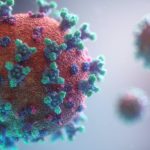If there is one achievement that has been at the center of medical science research over the last several decades, it has been the creation of truly “personalized” medicine. These are treatments that are developed and administered on a patient-by-patient basis, based not only on their symptoms but their own body chemistry. It sounds like science fiction, but it’s happening now, and it is our ribonucleic acid (RNA) that is making it happen.
If a person’s DNA is the roadmap of their lifetime health, their RNA is more of a real-time barometer, recording what happens in their body on a minute-by-minute basis. Our DNA stores and transfers genetic information, but remains little changed throughout our lives. At best, it can tell us about the probability we will someday develop various diseases — whether or not we will get cancer, for instance, or be susceptible to diabetes or heart disease — but it can’t tell us much about our current health.
RNA is different. It is always active, reporting on what is happening in our bodies in real-time. This means it can provide a much more accurate view of how cells are behaving and how medicine can intervene when things go wrong. Not only that, it offers a look at both what is wrong with a given patient as well as how they are responding to a certain treatment. Doctors can use this information to personalize treatments to match individuals, as well as to tweak therapies to improve patient health.
The future of personalized medicine is coming, and RNA is offering the tools to make it a reality.
iSelect has been watching this trend unfold for years, and have been supporting this work through our investments in companies like Cofactor Genomics, which is developing a series of RNA-based diagnostic and disease-monitoring tests.
We aren’t alone.
Recently, Clifton Leaf, the editor-in-chief of Fortune magazine, issued three big predictions for the future of health in 2018 and beyond, and the rise of RNA-based therapies was at the top of the list. DNA is out, RNA is in.
“If 2017 was the year of DNA—a time of gene therapy breakthroughs and of the continued refinement of the gene editing tool CRISPR—then 2018, I foretell, will be the year of DNA’s kissing cousin: RNA, or ribonucleic acid.
“Molecular biology’s famous “Central Dogma” states that DNA, the living computer code that makes up our genes, is first transcribed into RNA, which is then translated into specific proteins, which ultimately do the 24/7 work of the body and form its many structures. (There are some exceptions to the rule, as certain tumor viruses demonstrate—see the sad, heroic tale of Nobel laureate Howard Martin Temin , who had the effrontery to challenge said dogma.) But while single-stranded RNA has never shared top billing on the biological marquee with its elegant, gyring, double-stranded relative, it just might hold the answer to some remarkable cures. That’s because, in theory, thanks to that single wisp of intermediate code, the genes implicated in many diseases should be easier to quiet.”
The tide is turning, he writes, with new RNA-targeting drugs finding their way to market for some rare neurological disorders.





